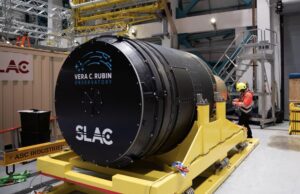ButSpeak.com
News which Matters.

Chile is set to become home to the world’s largest digital camera for optical astronomy, featuring an astounding resolution of over 3.2 gigapixels and weighing nearly three tons. This groundbreaking camera will be installed at the Vera C. Rubin Observatory, situated on the summit of Cerro Pachón in the Coquimbo region, at the edge of the Atacama Desert, approximately 565 kilometers north of Santiago.

The Vera C. Rubin Observatory, operated by the AURA association of universities and the NOIRLab center, is an integrated system comprising an eight-meter wide-field ground-based telescope, the high-resolution camera, and an automated data processing system. This state-of-the-art setup is designed to conduct a decade-long survey, generating about 20 terabytes of data each night and producing a comprehensive catalog database of 15 petabytes.
“Everything that we needed for operations is now on the summit and ready for checkout and hopefully for installation a little bit later this year,” stated Stuartt Corder, chief science officer of AURA and deputy director of NOIRLab.
The observatory aims to explore the enigmatic realms of dark energy and dark matter, phenomena that constitute the vast majority of the universe yet remain largely unknown. Additionally, the project will study the potential for Earth to collide with asteroids and investigate stars and planets near the sun.
“This is a really inspiring moment where you can say – we’re starting. We’re standing here at the precipice, getting ready to start a campaign that in ten years, we hope will answer questions about the universe’s origins and its future evolution,” said Corder. The findings from this exploration are expected to refine our understanding of the cosmos significantly.
AURA, a consortium of 47 U.S. institutions and three international affiliates, manages astronomical observatories for the National Science Foundation and NASA, including the NOIRLab center. The clear skies of Chile’s Atacama Desert, the driest desert on Earth, make it a prime location for astronomical research, hosting a significant portion of the world’s investment in this field.